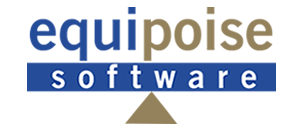Equipoise Software have put up two new Introductory videos on our Equipoise Software YouTube Channel for both the Colored Inversion Module and the Simulated Annealing module.
Fully integrated with Kingdom as well as Petrel, both modules serve as an ideal inversion packages which can be well independent and are only loosely coupled to the original starting model, producing results quickly.
The process of inversion restores the original amplitude value of the rock with the seismic trace amplitude removed – the recorded seismic trace is the reflection coefficient (a ratio of impedances at boundaries) convolved with the seismic wavelet. The original amplitudes are lost and the seismic trace amplitudes are entirely arbitrary so you cannot reliably relate the seismic values directly to any rock property. Inverted impedance has the original amplitude values restored and therefore more information is shown in a model than just the depth to the tops of particular formations – the prediction and representation of properties of the rocks making up the formations between the interpreted reflecting boundaries can be seen more clearly.
The Colored Inversion module uses automatic seismic to well phase correction enabling you to create an inversion with less noise and signal instability. It supports single and multi-well analysis and uses sonic log to time-depth curve and check shot calibration.
The Simulated Annealing module is more a sophisticated Inversion which generates a more accurate Relative Impedance and Absolute Impedance for QI work. SA is a process analogous to the heat process where a metal is heated to a specific temperature and then allowed to cool slowly applied to numerical modelling problems to find the global minimum value.
The videos will guide you through an introduction of Seismic Inversion and then move onto the specifics of each type of Inversion, concluding with a walk-through demonstration showing how easy the modules are to use.
Go here for the CI module video and here for the SA video.
Hope you enjoy watching!

